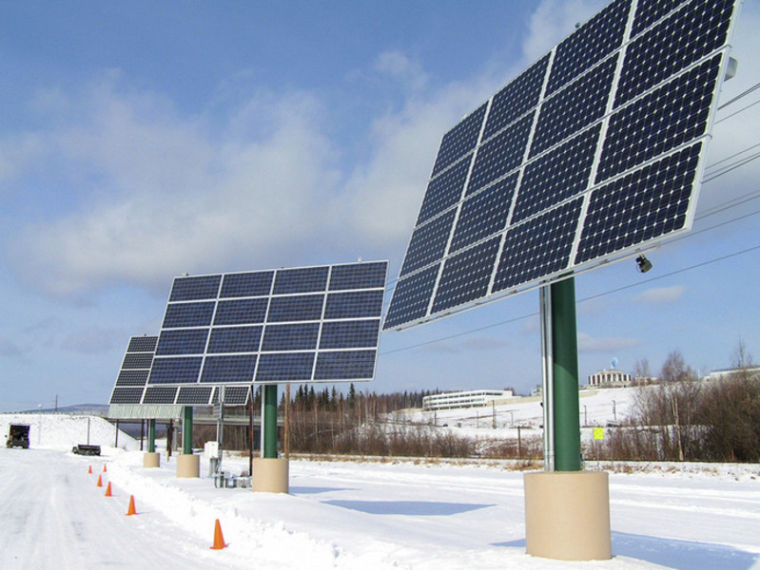Remote communities in Alaska encounter substantial energy challenges because of their geographic isolation. Limited access to the electrical grid makes it difficult for many villages to secure reliable power. The high cost and logistical challenges of transporting fuel and electricity to these remote areas only add to the burden, leaving residents dependent on expensive and often inefficient energy sources. This leaves communities vulnerable to energy shortages, especially in harsh winter conditions.
In response to these challenges, solar power has emerged as a promising solution. With the growing interest in renewable energy, Solar Panels In Alaska offer a way to address energy shortages while reducing dependency on costly external fuel sources. One innovative approach gaining traction is the use of streetlight poles equipped with solar panels, providing local, sustainable energy. These off-grid solutions offer the potential for greater energy independence and reliability, even in the most remote parts of Alaska.

Understanding Streetlight Poles with Solar Panels
Solar-powered streetlight poles are a smart and sustainable solution, combining solar panels, batteries, LED lights, and sensors into one seamless system. The solar panels absorb sunlight during the day and transform it into electrical energy. This energy is then stored in batteries, which power the LED lights through the night. These poles operate independently, eliminating the need for grid power and offering an eco-friendly, off-grid solution for street lighting in remote areas.
By harnessing the sun’s energy, the system ensures reliable lighting throughout the night. The integrated sensors help optimise energy usage, adjusting the lights based on environmental conditions, and ensuring dependable, sustainable lighting even in challenging, isolated locations.
The Need for Solar-Powered Streetlight Poles in Alaska
Energy Access in Remote Communities
Alaska’s vast and remote geography poses significant energy challenges. Many communities are isolated, lacking access to the central grid and relying heavily on expensive and polluting diesel generators for power. This dependence on fuel delivery adds high logistical costs, making energy access difficult and costly in these regions.
The Advantages of Solar Power for Alaska
Solar power reduces reliance on fossil fuels, offering a clean energy alternative. Despite Alaska’s long winters, solar panels can generate electricity year-round, with energy stored in batteries for use during cloudy periods. Solar power provides sustainability, lower carbon emissions, and long-term environmental benefits, contributing to a greener future for the state.
Key Benefits of Solar-Powered Streetlight Poles for Remote Communities
Energy Independence
These poles help reduce reliance on the grid or costly fuel shipments by utilising local, renewable energy. These poles generate power from sunlight, eliminating the need for external fuel sources. This contributes to greater energy independence for remote communities, allowing them to operate autonomously and sustainably without the dependency on imported fuels.
Cost Savings
These poles offer significant cost savings by lowering operational and maintenance expenses. Unlike traditional grid-based systems, they don’t require expensive fuel transportation or constant fuel deliveries. With minimal upkeep, these systems reduce both operational costs and dependency on external energy sources, providing long-term financial benefits for remote communities.
Reliable Power Source
Solar streetlights provide consistent lighting, even during power outages or extreme weather. The energy is stored in batteries for use at night or in cloudy conditions, ensuring uninterrupted service. These resilient systems operate independently from the central grid, making them reliable for remote areas where access to continuous power is often unreliable.
Enhanced Safety and Security
Solar streetlights improve safety in remote areas by providing reliable lighting, especially during long, dark winter months. They also support emergency response systems, offering dependable power for communications and security equipment. This enhances community security by ensuring that essential services remain operational, even in harsh conditions, and helps keep local residents safe.
How Solar-Powered Streetlight Poles Can Integrate into Existing Infrastructure?
Retrofitting existing streetlight poles with solar panels offers a cost-effective solution without requiring major infrastructure changes. Solar panels can be easily integrated into various types of poles, whether new or old, allowing for flexibility in urban or rural settings. This retrofit approach minimizes installation costs and disruptions while maximization the use of existing infrastructure, making it an ideal option for remote communities.
Off-grid and hybrid solar systems provide reliable energy solutions by operating independently or in conjunction with the grid. Off-grid systems rely solely on solar power and storage, while hybrid systems combine solar energy with grid power to ensure continuous operation. These systems often include battery storage, which ensures a consistent power supply even during cloudy days or at night, enhancing energy security.
conclusion
Solar Panels In Alaska offer a sustainable solution to the energy challenges faced by remote communities. By reducing reliance on costly fuel shipments, offering significant cost savings, and providing reliable, continuous lighting, these systems enhance both energy independence and safety. Local governments and communities should explore solar infrastructure solutions, considering pilot projects or seeking grants to foster solar energy adoption and improve the quality of life in rural Alaska.
Also read interesting articles at Papularmagazine.com


